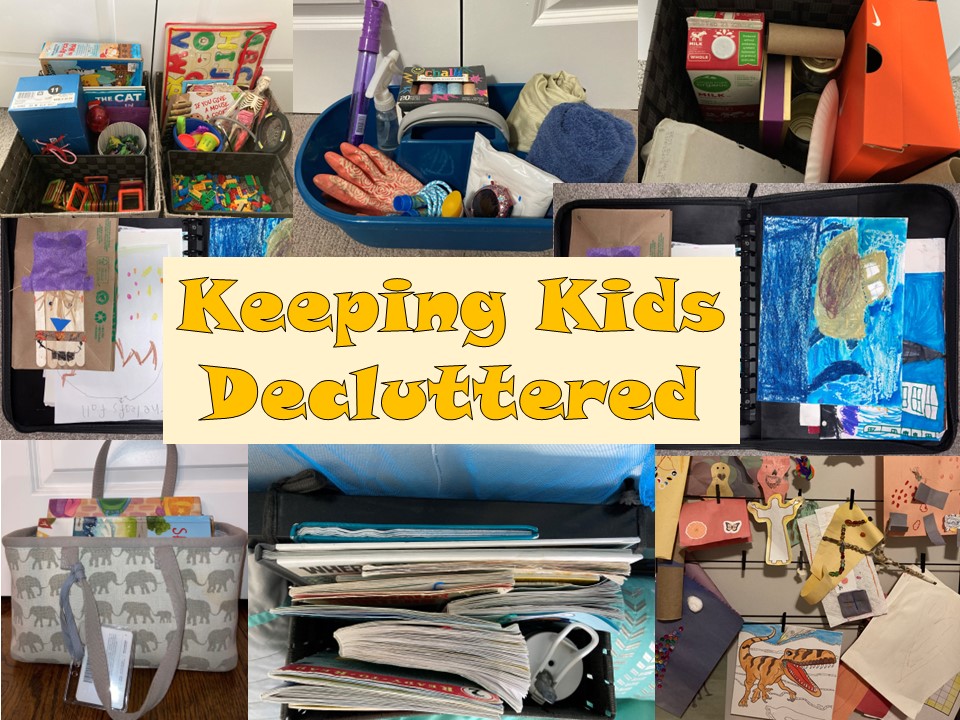
Click here to sign up for notifications on Facebook, Instagram, Pinterest, and YouTube.
Check out more resources for parents here.
Keep Track of Library Books
Keep library books in a tote bag with a hard bottom. It will stand up on its own at home or while in the library or can be hung on a stair post. Attach an ID tag holder to one strap and put your library cards in it (up to two fit neatly and each can be placed with the bar code facing outward. This will make swiping the card more efficient when checking out books.
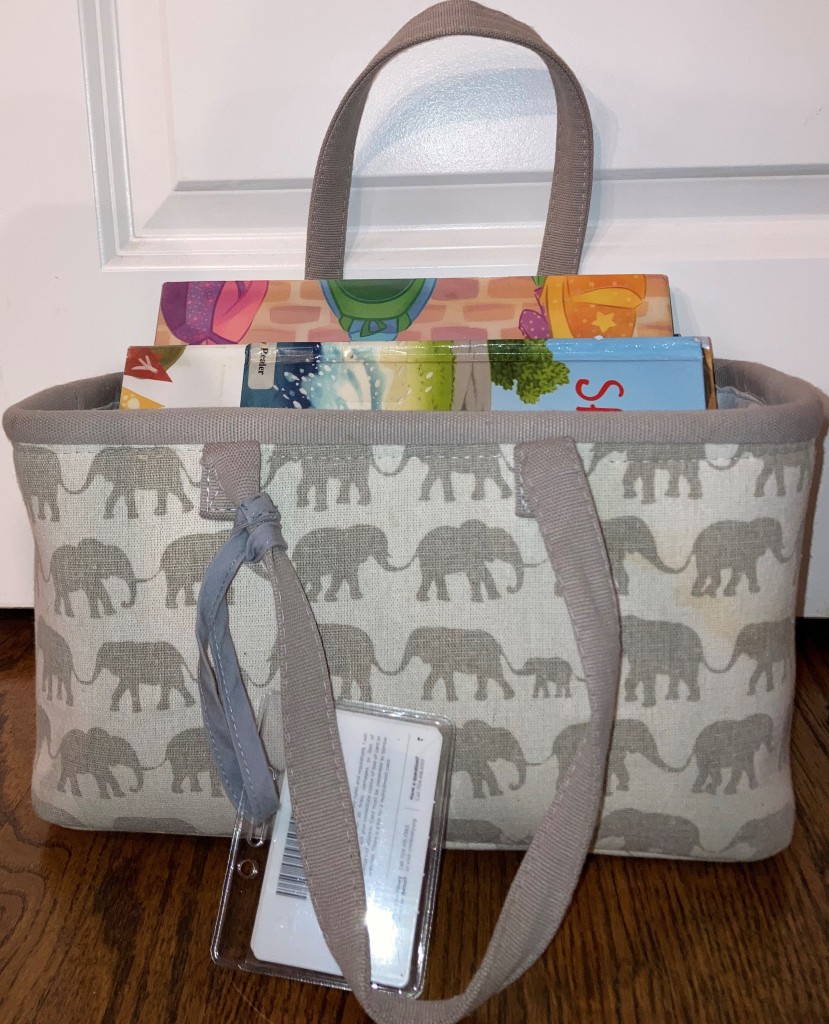
Have a Put-Away Bin for Each Child
Rather than chase kids around trying to get them to clean up, or putting it all away yourself, sort all the things for each child into their own bin. When it’s a good time, have them sort their bin to put things where they belong. You’ll save yourself a lot of stress!

Set Up a System for Artwork
Kids’ art can begin to pile up very quickly. If you don’t have a system for what to do with it, it can become quite overwhelming. When your children come home with art from school and other groups, discuss together which pieces will get tossed (it’s never too early to learn that you can’t keep everything-a valuable lesson for future organizers), which will be given away, and which will go in their personal space.
A clothespin board is great to use for the art your children want to keep as they can take items on and off themselves. Remember to stress that once the board is full, your children must decide which items will get replaced.
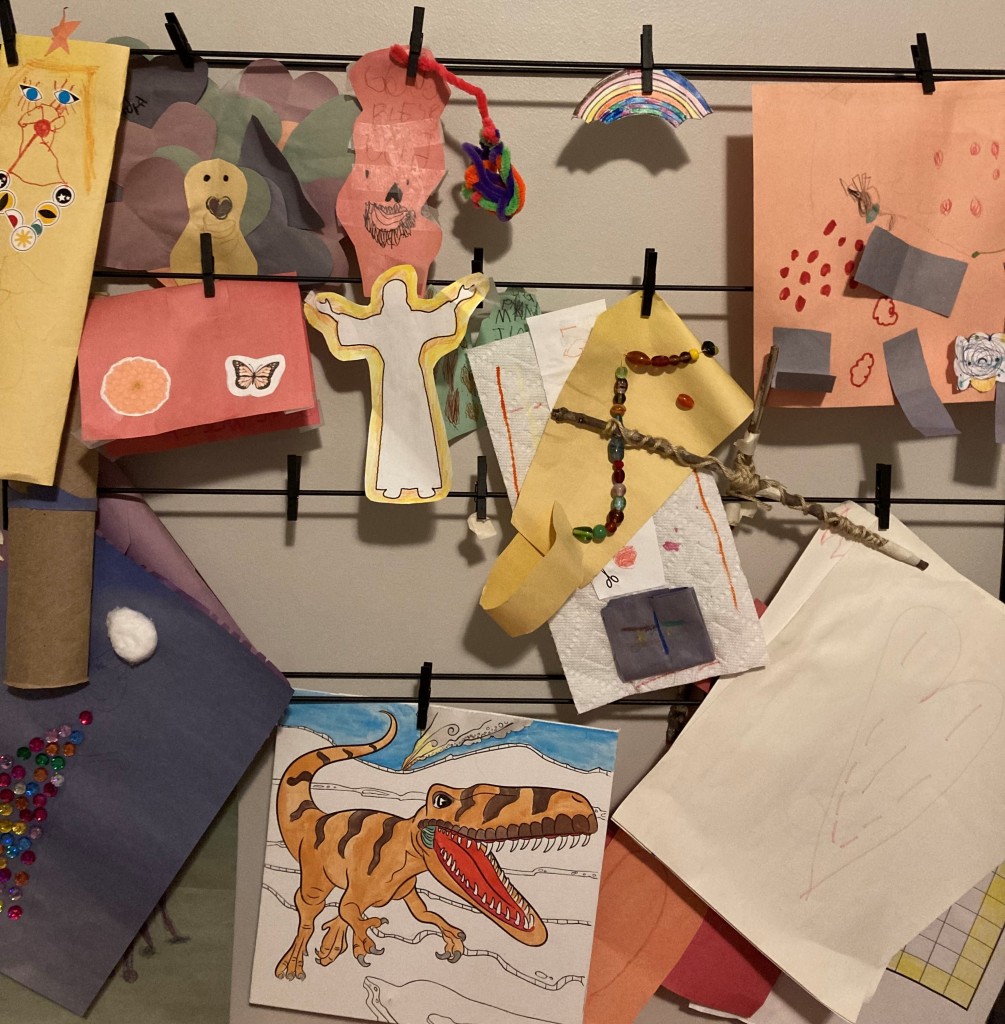
For the art your children give to you, put them in a large (24″ x 36″) professional artist’s portfolio case with a zipper. Keep these until you are ready to put them together in a keepsake album or scan them and print a keepsake album from an online shop.

Another option for artwork being given away is to keep an envelope for a grandparent or other relative. Put artwork in it as it comes home and when it is full enough, mail it out.
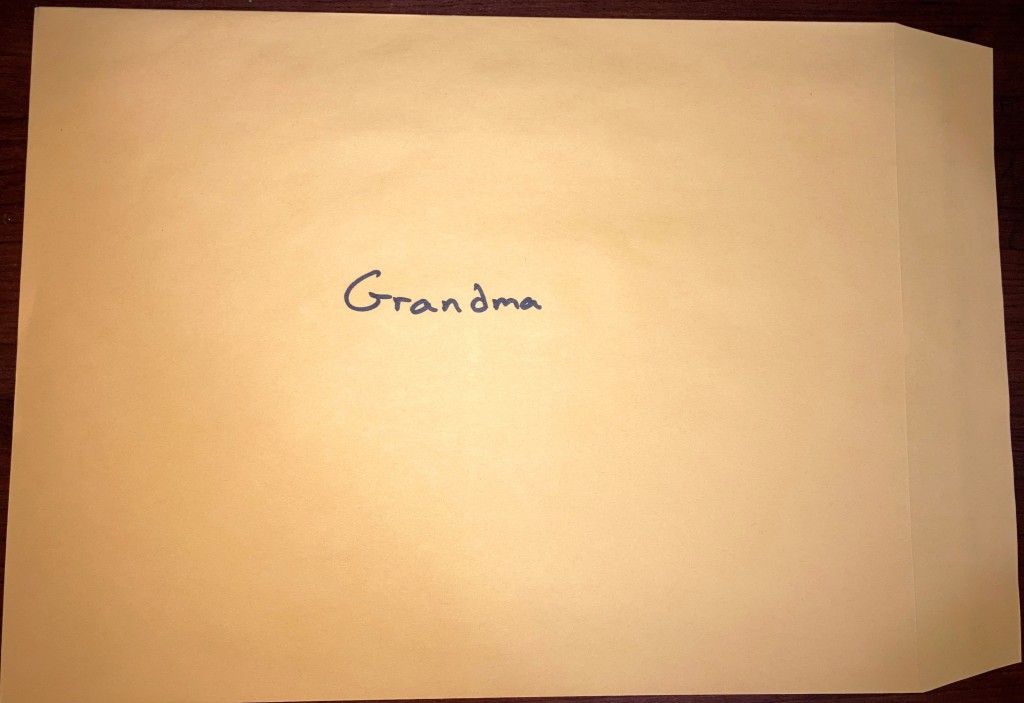
It’s also great to scan/take a picture of everything as soon as it comes home, then create a printed photo book that is much more compact but still shows all your child’s art (without dripping of glitter or taking up 3-D space).
On the subject of artwork, here’s a quick tip. Put down parchment paper before doing crafts that involve glue. It will keep your table clean, and the glue won’t get stuck to it.
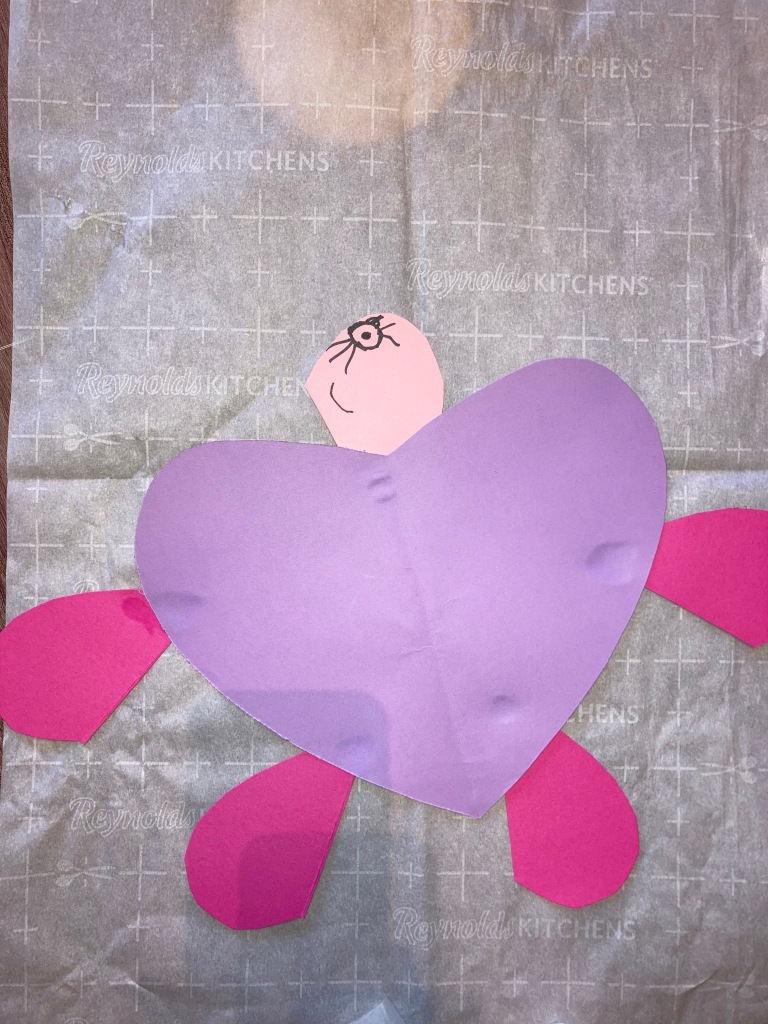
Create an Outdoor Tote
Keeping kids entertained outside can be much easier when you are prepared. Create a tote to keep by the back door with all the outdoor fun items. You can also pop this in the trunk when you are going to a park without a playground or even a friend’s house that isn’t as kid-friendly and you want an easy way to keep your child entertained outside.
What goes inside?
- Bubbles (a refillable bottle that has the loop attached to the cap so it won’t sink in)
- Chalk
- Jumprope
- A small towel for wiping off wet play equipment
- Sunglasses
- Sunscreen (preferably the kind that rolls on like deodorant so your children can apply it themselves)
- Kid-size gardening gloves
- Hand wipes
- Mini sanitizer
- A small spray bottle filled with water (you’d be surprised how long a child can be entertained by just watering every plan this way)
- A small shovel (only for your own backyard)
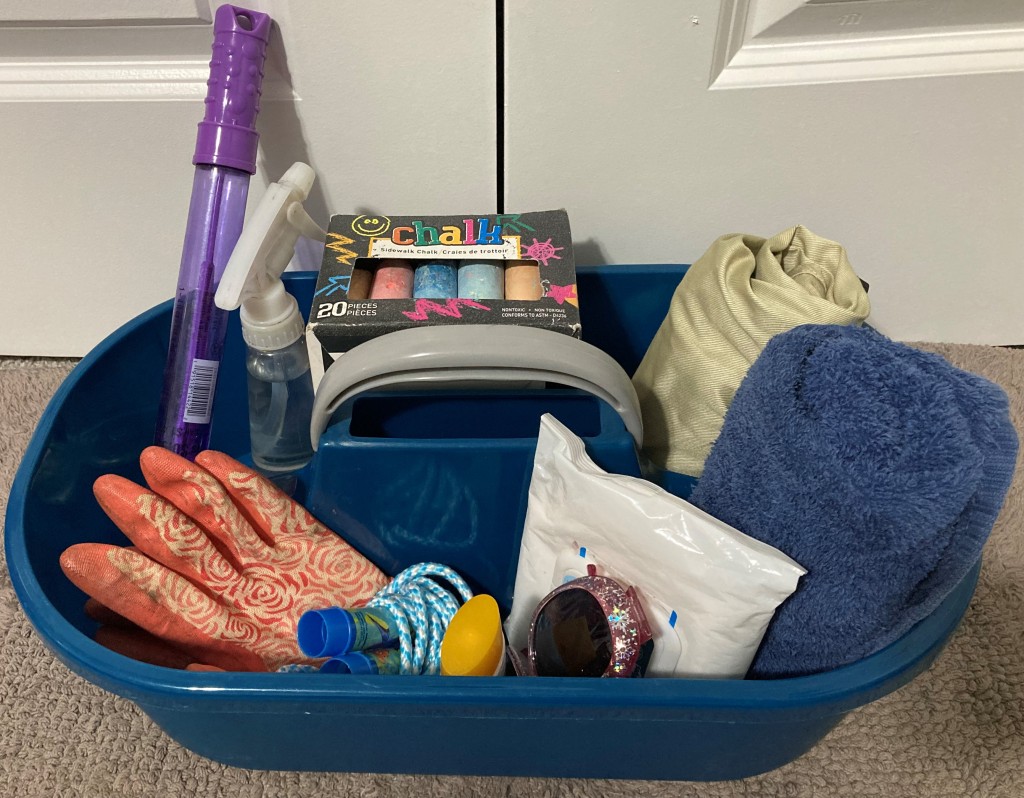
Keep an Emergency Craft Basket on Hand
Crafts happen. Whether it’s a school project that snuck up on you or a snow day has you scrolling Pinterest desperate for something to do with your kids that doesn’t involve a pig with a British accent, it’s always a good idea to be prepared with the most common craft recyclables. Keep a basket on hand with these items:
1 Per Child:
- Milk/Juice carton
- Shoebox
- Glass jar
- Tin can
- Egg carton
2 Per Child:
- Toilet paper roll
- Paper towel roll
- Paper grocery bag
- Regular paper plate (not the fancy kind that are too slippery to write on and too thick to cut)
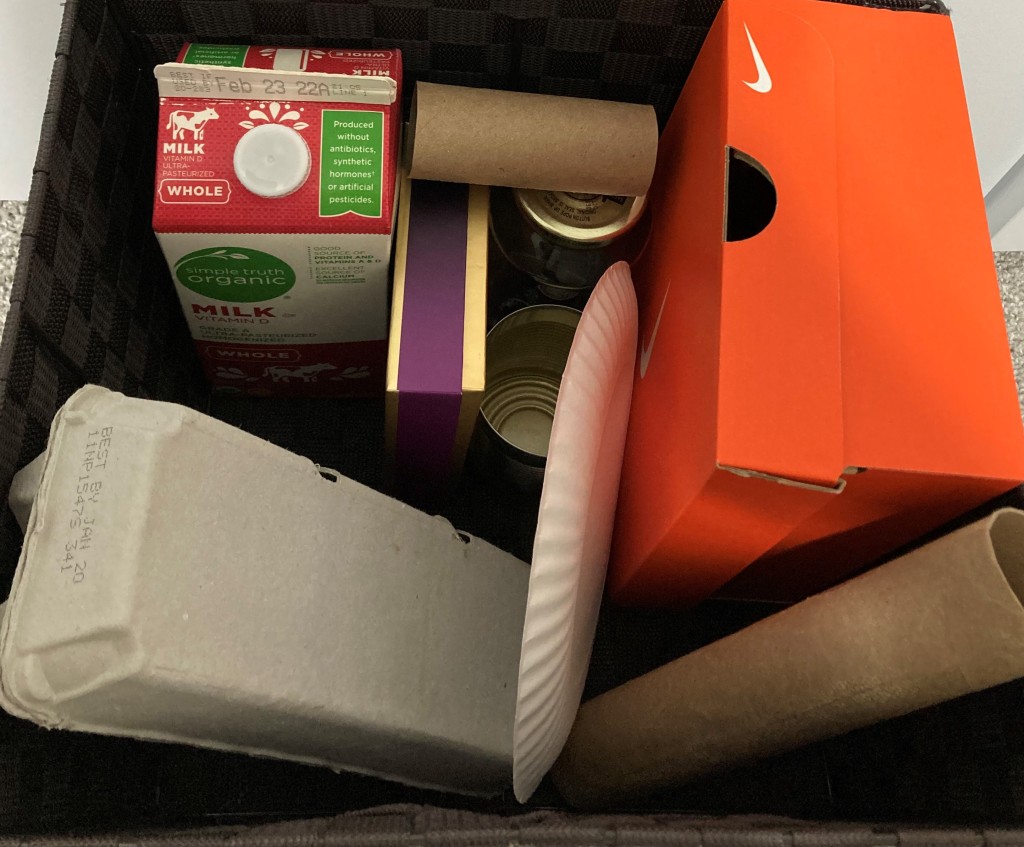
Create a Toy Rotation System
First of all, you will need to decide if a toy rotation system is best for your home and child. Take into account how often your child is at home, how much space you have, and how many/how much variety of toys you have.
A toy rotation system can be sorted into containers as big as jumbo plastic storage bins, or as small as woven baskets, depending on your needs and amount of toys/space.
A system can be a giant bin for a whole week, or a small bin per day.
Try to evenly distribute toys according to function. To get started, considering filling each bin with at least one of:
- Puzzle (flat or 3D…place unboxed puzzles in a jumbo zip bag)
- Books
- Creative play (dolls, costumes)
- Fine motor skills toys (boards to lace, beads to put on poles, tools, jumbo tweezers, blocks to push into holes)
- Gross motor skills (hook and latches tossing mitts, ball darts, bean bag toss, foldable crawling tunnel)
- Building blocks (Legos, magnet tiles, wooden blocks, connecting gears, bristle blocks, flakes, connecting sticks, Lincoln Logs)
- Art Supply (keep Crayons and pencils out all the time, but rotate stencils, modeling dough, pom-poms, pipe cleaners, pastels, paints, stickers)
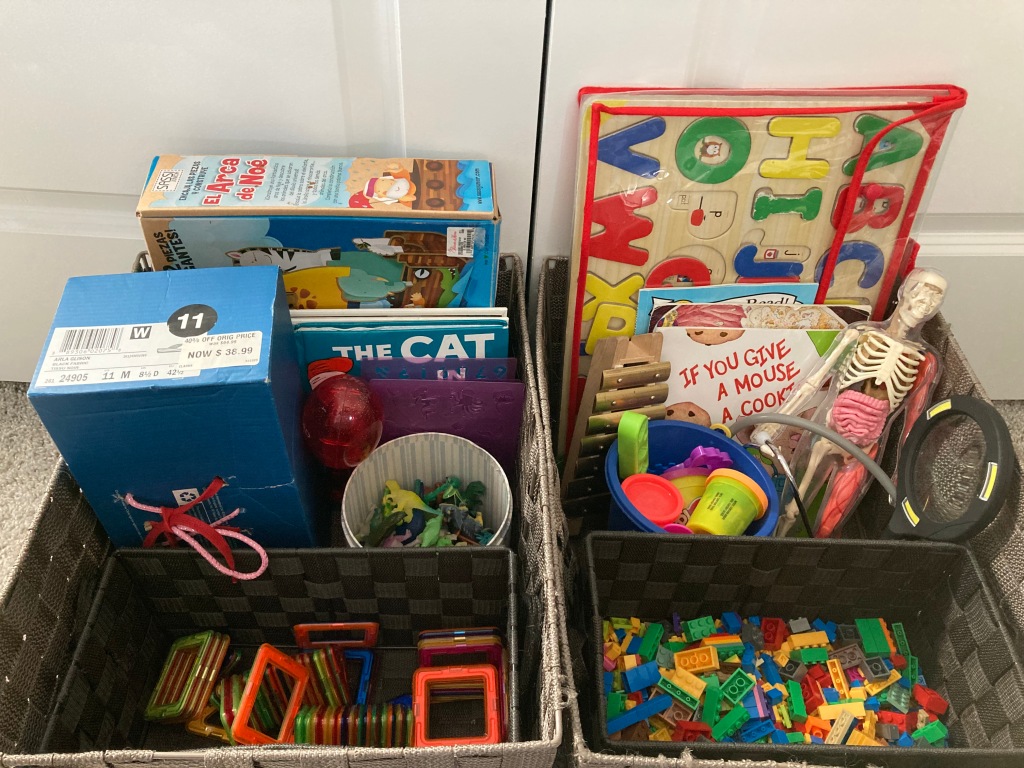
Another option to consider, if this one does not appeal to you, is to keep toys in bins according to type, rather than day, but out of reach of your child, so that a new bin may not be received until the last bin has been refilled, leaving nothing behind on the floor.
Too Many Stuffies?
Are all those stuffed toys spilling out everywhere? Keep them up high in corners where they won’t collect dirt or take up valuable shelf space. There are many nets on hooks that are designed for just this use.
Another way to handle the never-ending stuffy accumulation is to establish a rule that once a certain space is filled up, any new studies received (because they’re constantly being given as gifts) means the same volume of stuffies must be given away. You can even turn this into a hands-on math or science lesson by weighing or measuring the studies being replaced.
Another way to handle the never-ending stuffy accumulation is to establish a rule that once a certain space is filled up, any new studies received (because they’re constantly being given as gifts) means the same volume of stuffies must be given away. You can even turn this into a hands-on math or science lesson by weighing or measuring the studies being replaced.
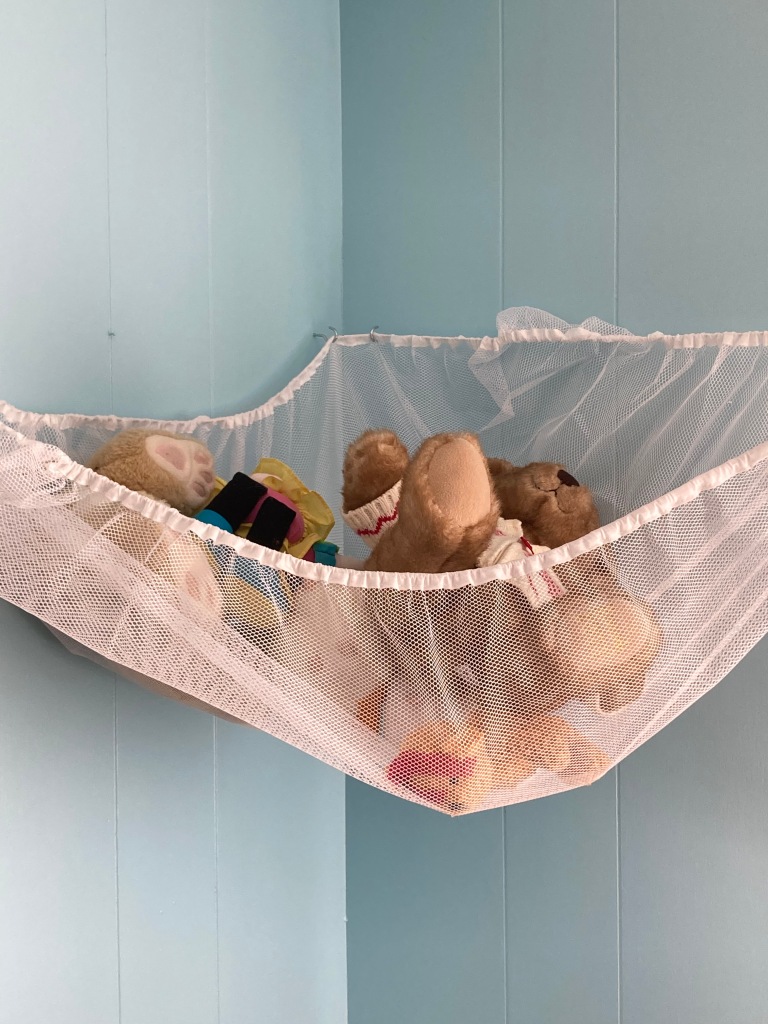
Homemade Toys Filling Up Your Home?
It’s great when kids make their own toys from scratch or bring home projects from school that they continue to play with. Not only are they better for the environment than piles of plastic, they also encourage creativity and a sense of pride in children’s workmanship.
The bad part? Pretty soon your home can fill up with all those little trinkets that don’t get played with for too long? So to avoid this mess, write an expiration date on any disposable toys your children make. Explain that just like the milk, these toys have an expiration date, after which they need to go in the recycling or trash. Choose how long you think items should stay, then when children clean up, include all expired items in the trash as one of their instructions (they are responsible for reading the expiration dates).

Make a Bottle & Book Bin
If your child does not have a nightstand, or is too small to reach it yet, attach a small cloth basket to their bed with string or shoelaces, or use a bike basket with hooks to hang over the edge of a bed that is solid. Keep your child’s water bottle and a handful of books (both read-alouds and independent reads) inside it.
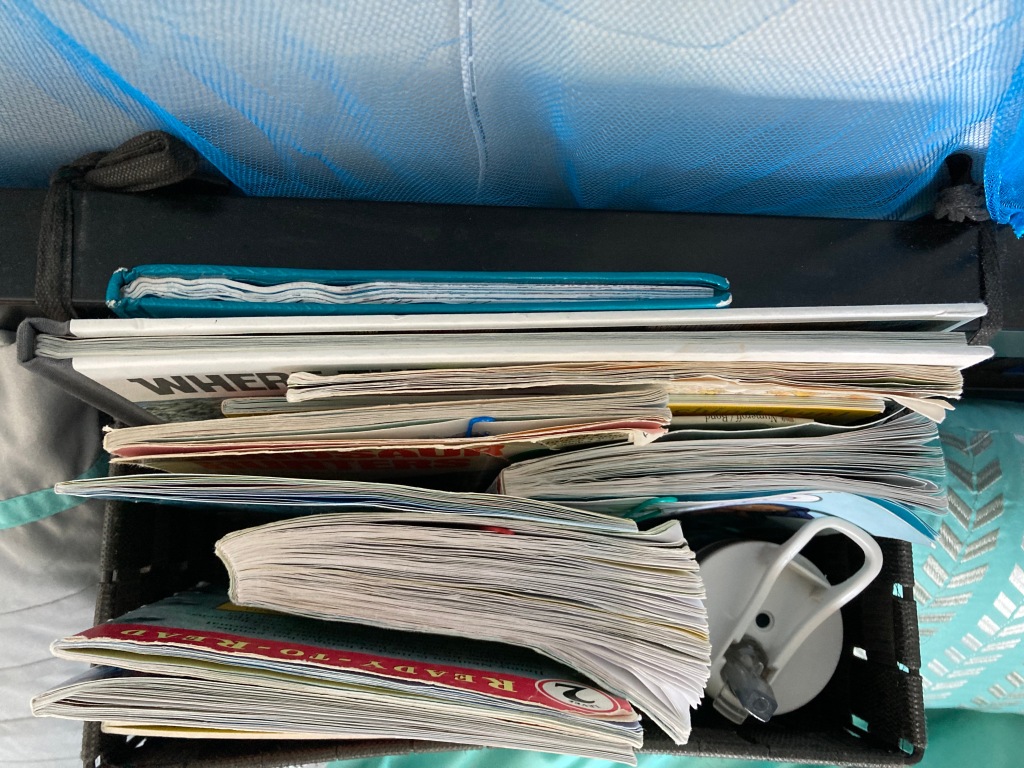
Staying Organized for School
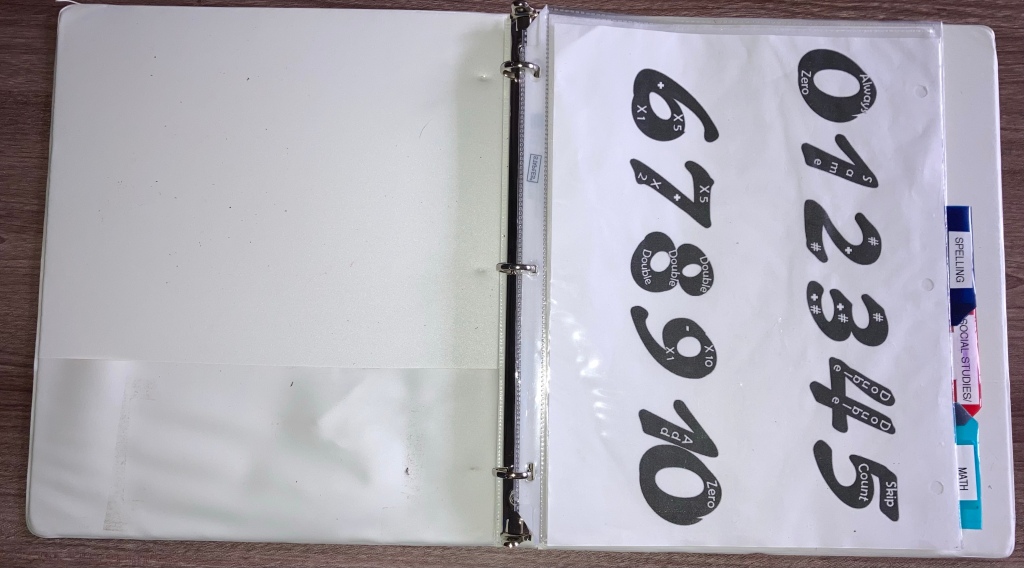
Does your child receive study guides to review at home? Create a binder with a plastic sleeve labeled for each subject. As study guides come home, slip them into their designated sleeve. Once the test has been taken, remove them. This will help you to see which subjects are missing their study guides, so you can log into your child’s online classroom to print what is needed. Keep a calendar in the binder that is just for school tests and projects.
If your child reads well in the car, use this as study time each day on the way to school. It’s a great way to make sure it gets done, when your schedule is jam-packed.
Child-Prep Your Car
In the car organizer keep kid-friendly hand wipes, tooth wipes, (road trips don’t have to mean cavities) and flushable wipes.
In the trunk keep a portable potty (with special disposable bags) for those emergencies that can’t wait till the next rest stop.
In the back pocket of the driver’s seat keep a super-small, foldable potty-seat (even after your child is big enough to sit without one, because rest stop toilets are disgusting) in its own carry bag.
In the back pocket of the passenger seat keep emergency change of clothes.
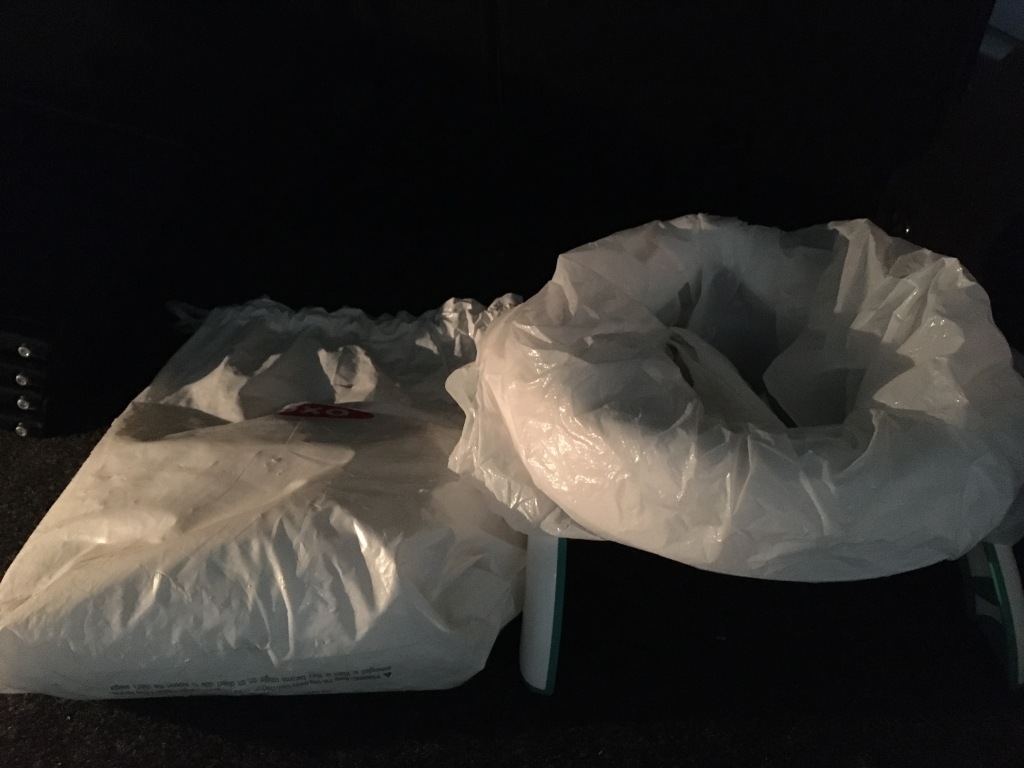
You may want to keep the above-mentioned outdoor basket in your car all the time.
Get a basket than can easily be reached by your child (elevated on the seat beside them and anchored by an empty seat belt), OR one that can be easily reached by you and passed back (tied to the back of the passenger seat headrest) with:
- Write-on book with attached dry-erase marker
- Sticker book (one where stickers can be moved around multiple times
- Maze puzzle
- Take-home book of the week from school (these are incredibly interesting in the short run as children made these themselves at school, but get ripped/boring just in time for the next one to come home in their backpack
- One special toy that always stays in the car
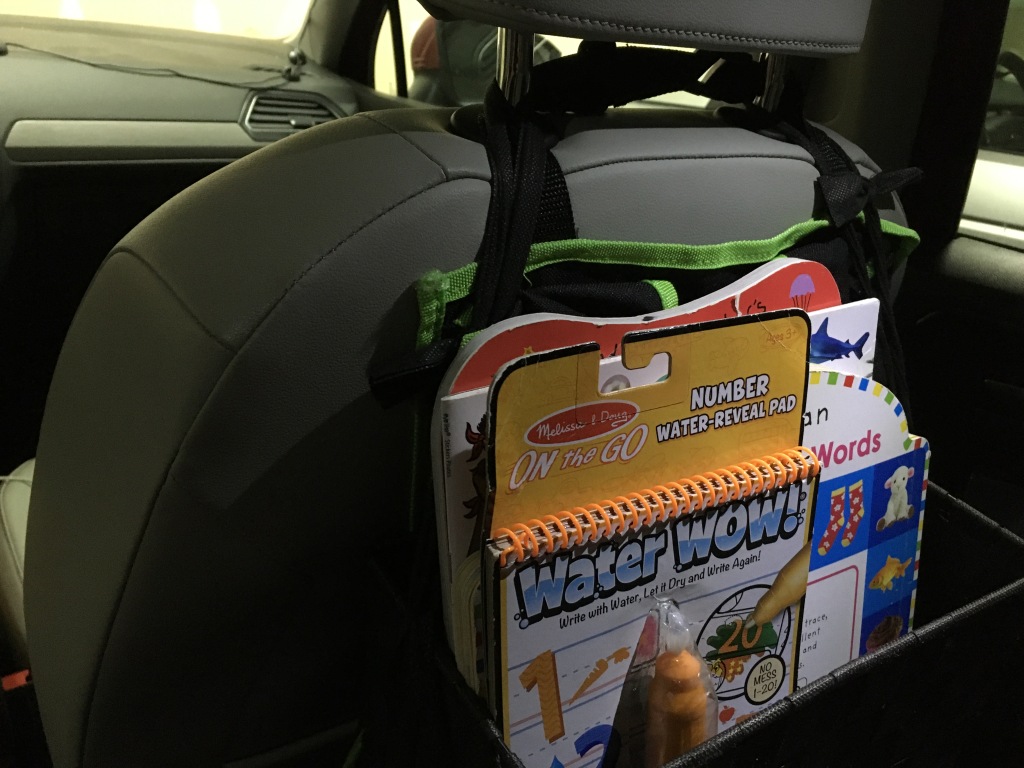
Create a Schedule for Everything
A schedule helps children at any age have a stronger sense of stability. When children are too young to read, a picture schedule (eating, bed, park, etc.) helps them develop a sense of time and order. For an older reading child, a schedule of what is expected at certain times can decrease stress and foster responsibility.
- Laminate the list or put in a plastic sleeve to be checked off with a dry-erase marker
- Use clothespins that move as items are completed
- Make squares and attach to the main page with Velcro
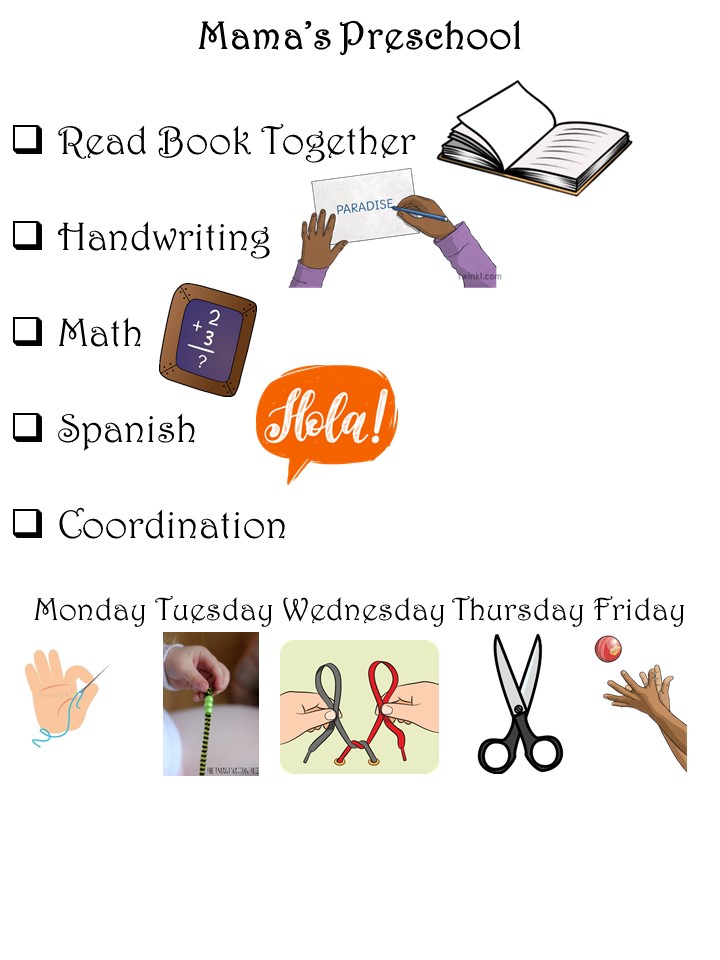
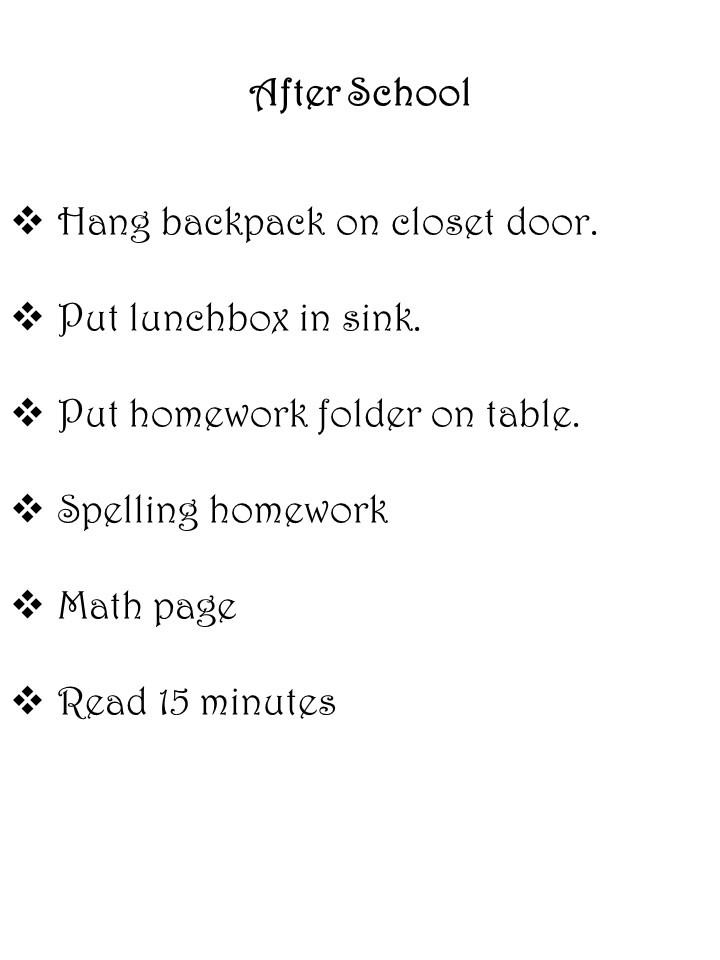
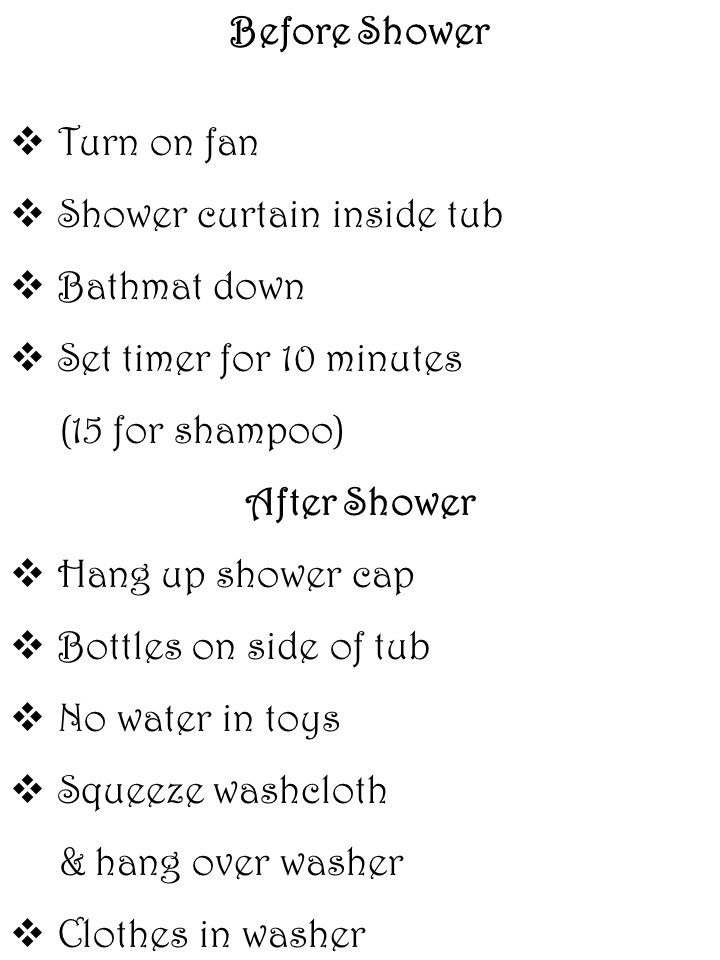
Too Much Splashing?
Kids splashing water everywhere because the showerhead is too far above them? Get an extension and suction cup holder so that they can wash themselves more easily (this is especially helpful for washing out shampoo).
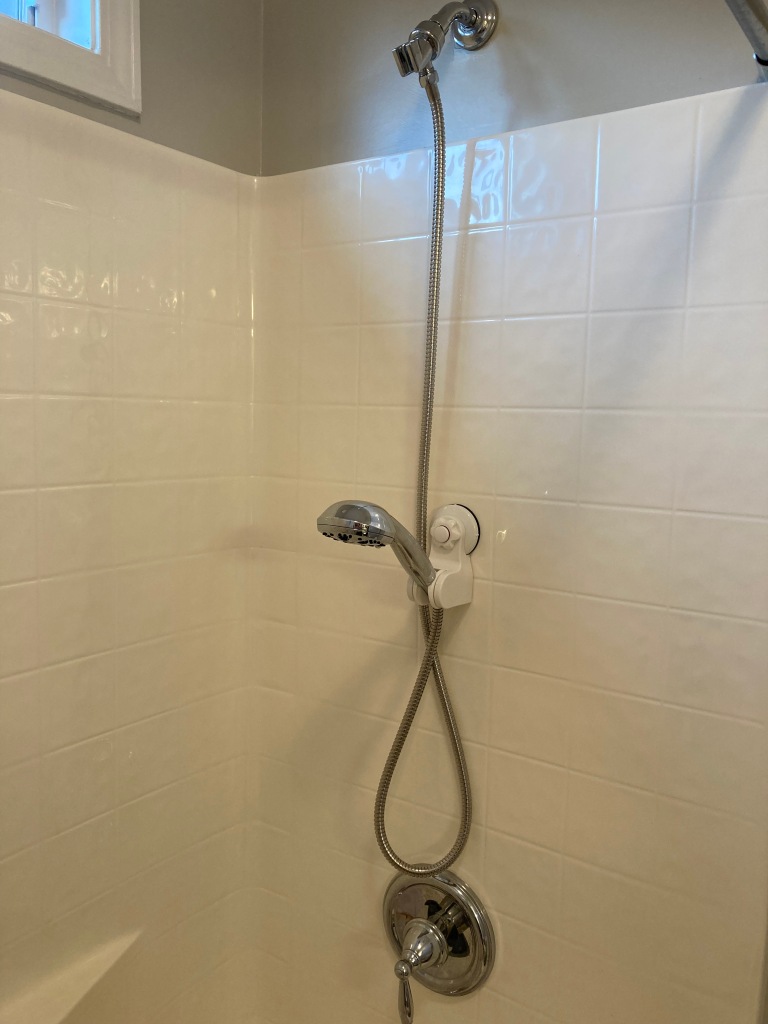
Keep Things Where They Are Needed
Are your kids constantly having to run back upstairs to get their socks right before running out the door? Save yourself the headache by keeping socks next to shoes. This principle goes for anything that you constantly find yourself needing to go back and get because you forgot it. Keep things where they are actually needed, rather than where it might seem “normal” to keep them.
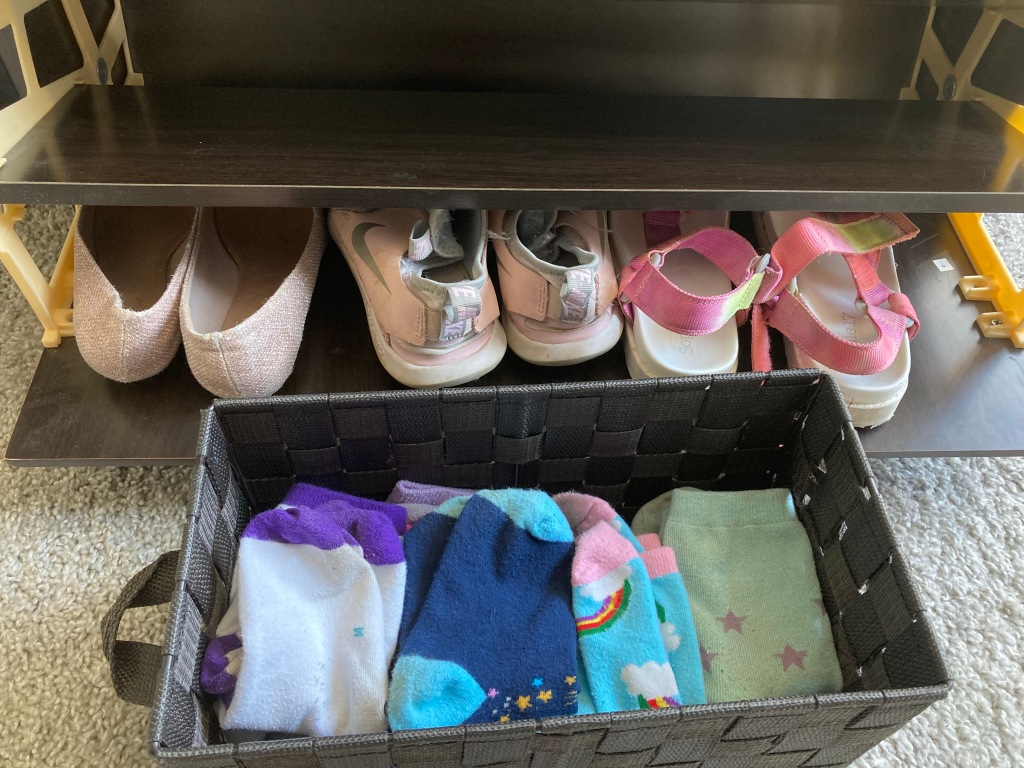
Label Things Where They Belong
Label things where they belong. To make it easier for your children to keep track of where they should put their things, label anything and everything that can be confused. Labeling your children won’t work, though ;P
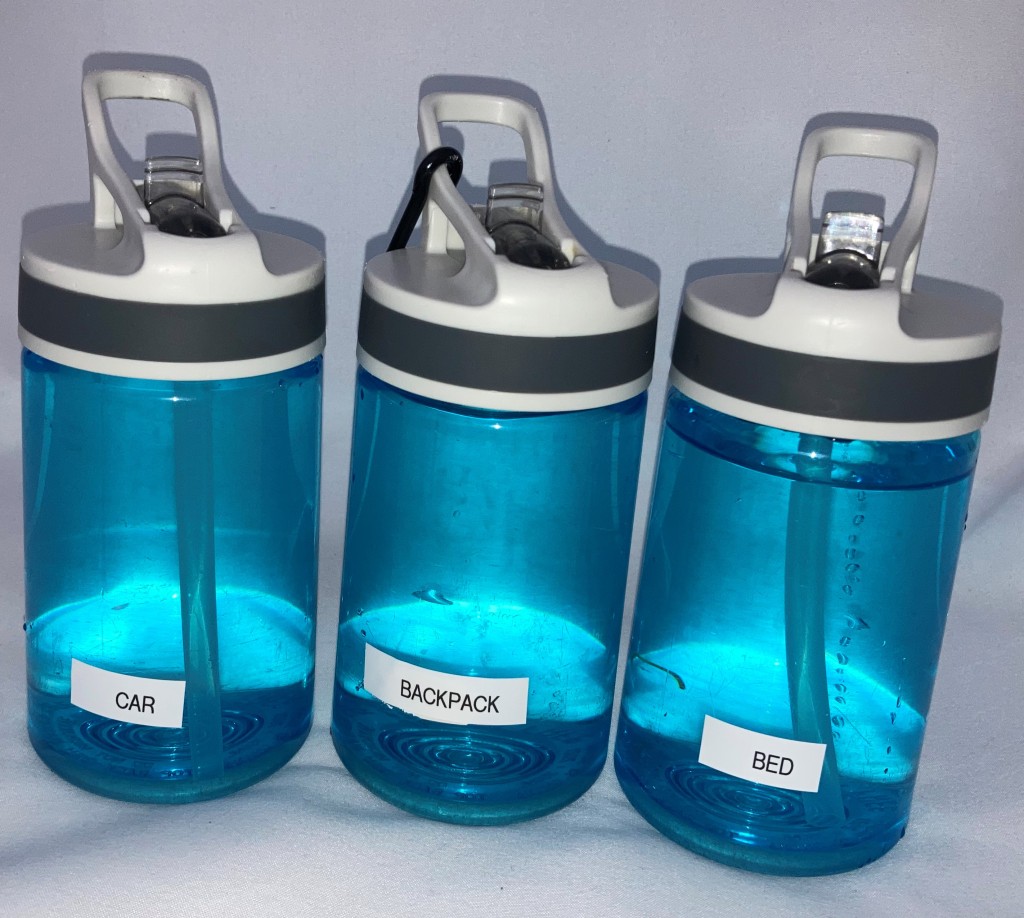
Want to get a monthly digest of all that’s new at Teach Grow Sow?
Click here to sign up for notifications on Facebook, Instagram, Pinterest, and YouTube.